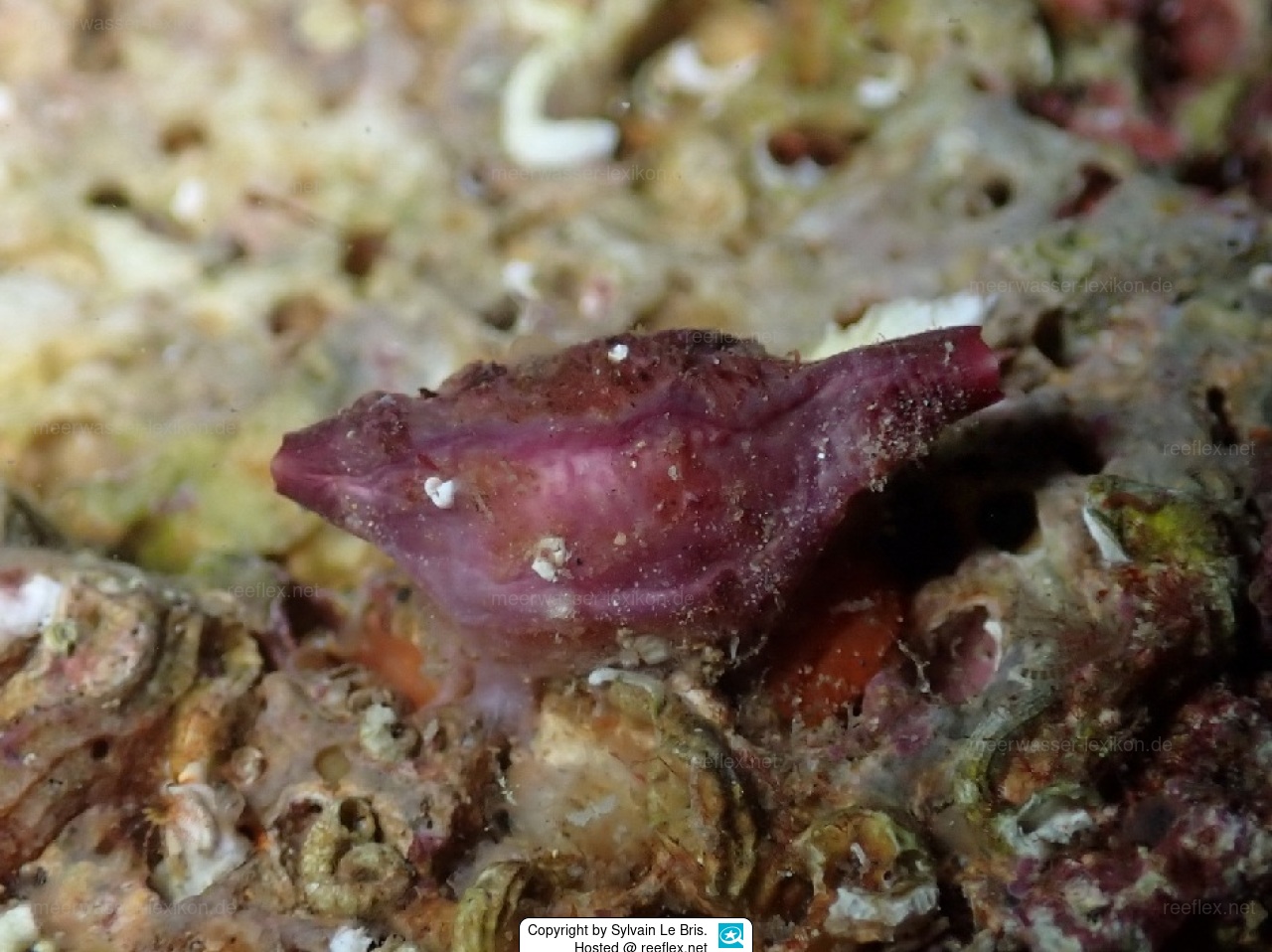Info
Note on the distribution of sea squirts
Pyura squamulosa is mainly found in European waters and the Mediterranean Sea, with some sources also mentioning Belize, Brazil, Senegal, and Egypt.
Sea squirts are marine animals that have achieved their triumph mainly due to anthropogenic reasons; they are and have been widely spread by ballast water and fouling deposits on ship hulls.
Pyura squamulosa is a solitary sea squirt with a scaly, leathery surface and is usually found under rocks.
Its siphons are short and located at both ends of its rather flattened body, and the siphons have cream-colored stripes.
Habitat:
Pyura squamulosa is found under rocks in places exposed to waves or tidal currents and where there is no sediment other than coarse gravel under the rocks.
The species has also been reported in seagrass beds and as an epibiont on mussel shells.
The outer color of the sea squirt ranges from pink to red, orange to purple, with the incidence of sunlight or diving lamps influencing the colors and making them appear significantly brighter.
Pyura squamulosa has an ecological significance that goes beyond its position in the food chain; it occurs in clean waters as well as in disturbed environments, which is why it is important for monitoring water quality.
Synonyms:
Cynthia ovata Alder & Hancock, 1907 · unaccepted (original combination)
Cynthia squamulosa Alder, 1863 · unaccepted (original combination)
Pyura squamulosa is mainly found in European waters and the Mediterranean Sea, with some sources also mentioning Belize, Brazil, Senegal, and Egypt.
Sea squirts are marine animals that have achieved their triumph mainly due to anthropogenic reasons; they are and have been widely spread by ballast water and fouling deposits on ship hulls.
Pyura squamulosa is a solitary sea squirt with a scaly, leathery surface and is usually found under rocks.
Its siphons are short and located at both ends of its rather flattened body, and the siphons have cream-colored stripes.
Habitat:
Pyura squamulosa is found under rocks in places exposed to waves or tidal currents and where there is no sediment other than coarse gravel under the rocks.
The species has also been reported in seagrass beds and as an epibiont on mussel shells.
The outer color of the sea squirt ranges from pink to red, orange to purple, with the incidence of sunlight or diving lamps influencing the colors and making them appear significantly brighter.
Pyura squamulosa has an ecological significance that goes beyond its position in the food chain; it occurs in clean waters as well as in disturbed environments, which is why it is important for monitoring water quality.
Synonyms:
Cynthia ovata Alder & Hancock, 1907 · unaccepted (original combination)
Cynthia squamulosa Alder, 1863 · unaccepted (original combination)







 Sylvain Le Bris, Frankreich
Sylvain Le Bris, Frankreich
















